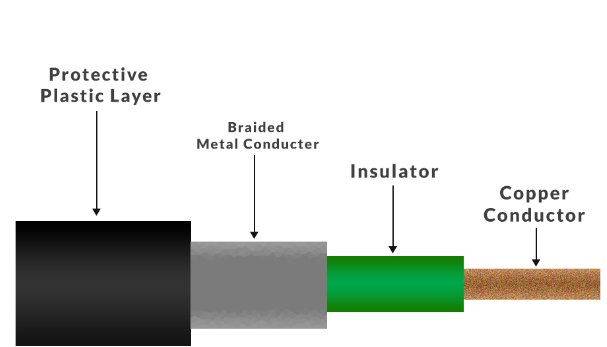Coaxial Cable vs. Monitor Cable: A Comparison
Catalog
Introduction
What is a coaxial cable
What is a Monitor Cable
Coaxial Cable vs. Monitor Cable Differences
Conclusion
Introduction:
The proper cable must be chosen in order to convey signals and connect devices. Coaxial cables and monitor cables are two popular types of cables used for various applications. To assist you in making an informed choice, we shall contrast coaxial cables and monitor cables in this post by examining their characteristics, uses, and distinctions.
Coaxial Cable:

Coaxial cables are widely used in various applications, including television, internet, and security systems. They consist of a central conductor, an insulating layer, a metallic shield, and an outer insulating jacket. The central conductor carries the signal, while the metallic shield protects against interference.
Applications:
Coaxial cables are commonly used in cable television (CATV) systems to transmit TV signals from the cable provider to your TV. They are also used for broadband internet connections, providing high-speed data transmission. In addition, coaxial cables are often utilized in security systems to connect cameras to monitoring devices.
Advantages:
1. Signal Quality: Coaxial cables are designed to minimize signal loss and interference, ensuring high-quality transmission.
2. Broadband Capabilities: Coaxial cables support a wide frequency range, making them suitable for transmitting both audio and video signals.
3. Durability: Coaxial cables are robust and can withstand physical stress and environmental factors, making them suitable for long-term installations.
Monitor Cable:

Monitor cables, on the other hand, are specifically designed for connecting display devices, such as monitors and projectors, to video sources, including computers, laptops, and gaming consoles. The most common types of monitor cables are VGA (Video Graphics Array), DVI (Digital Visual Interface), HDMI (High-Definition Multimedia Interface), and DisplayPort.
Applications:
Monitor cables are used in a variety of settings, ranging from home entertainment systems to professional environments. They allow users to connect their devices to displays and enjoy high-quality video output.
Advantages:
1. Video Quality: Depending on the type of monitor cable used, it can support different resolutions and video quality, including standard definition (SD), high definition (HD), and 4K.
2. Audio Support: Some monitor cables, such as HDMI and DisplayPort, also carry audio signals, eliminating the need for separate audio cables.
3. Convenience: Monitor cables are widely available and compatible with a range of devices, making them easy to use and connect.
Coaxial Cable vs. Monitor Cable Differences:
1. Application: Coaxial cables are versatile and used for various purposes, including TV, internet, and security systems. Monitor cables, on the other hand, are specifically designed for connecting display devices to video sources.
2. Signal Type: Coaxial cables transmit analog or digital signals, depending on the application. Monitor cables, such as HDMI, DVI, and DisplayPort, primarily transmit digital signals.
3. Video Quality: Monitor cables, especially HDMI and DisplayPort, offer higher video quality and support for higher resolutions compared to coaxial cables.
4. Audio Support: While coaxial cables primarily transmit video and audio separately, some monitor cables, such as HDMI and DisplayPort, can carry both video and audio signals.
Conclusion:
Choosing the right cable depends on your specific needs and the devices you are connecting. Coaxial cables excel in delivering reliable signals for TV, internet, and security systems, while monitor cables provide high-quality video output for display devices. Understanding the differences between coaxial cables and monitor cables will help you make an informed decision when setting up your audiovisual or networking systems.

Frequently Asked Questions


















